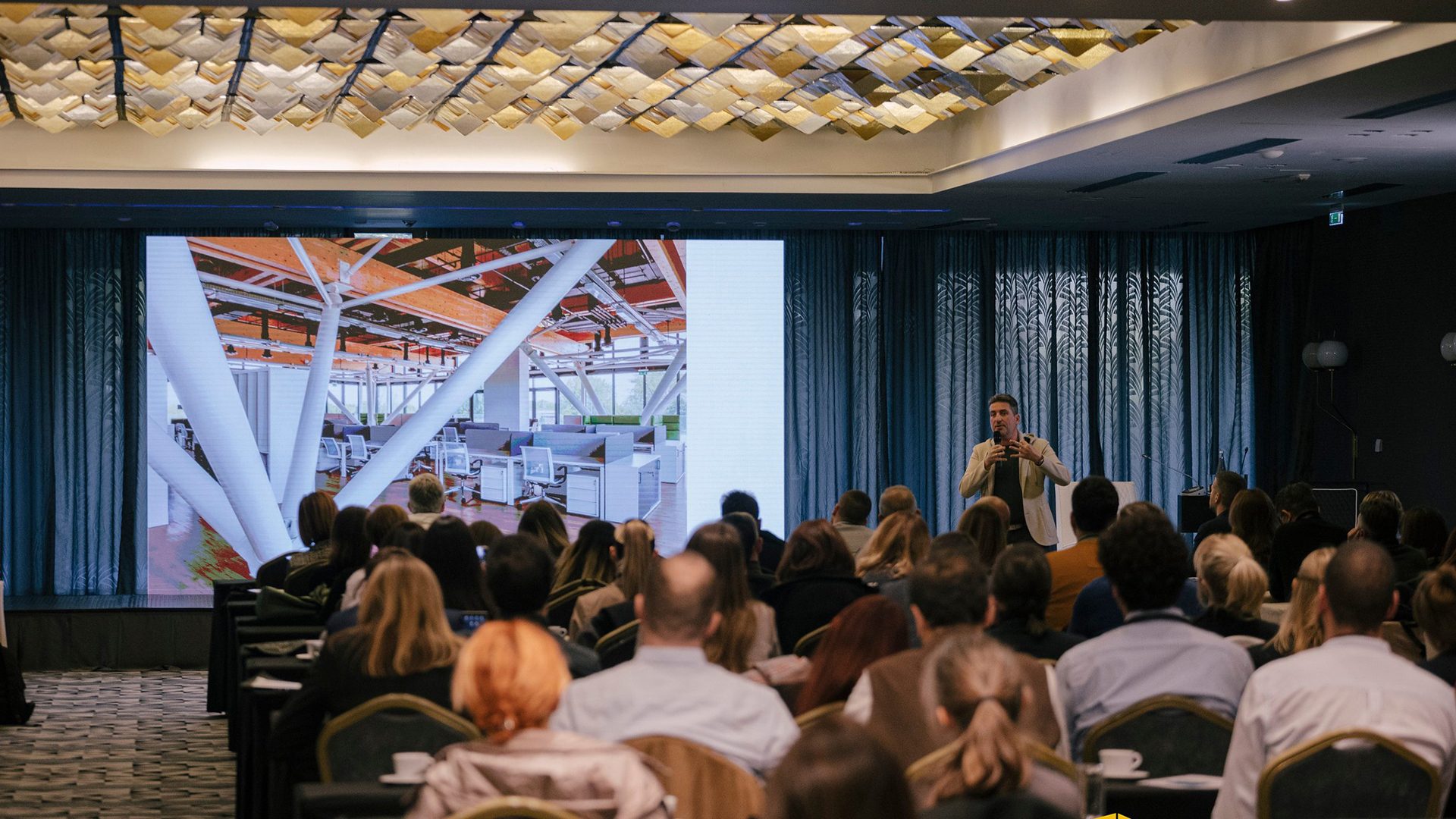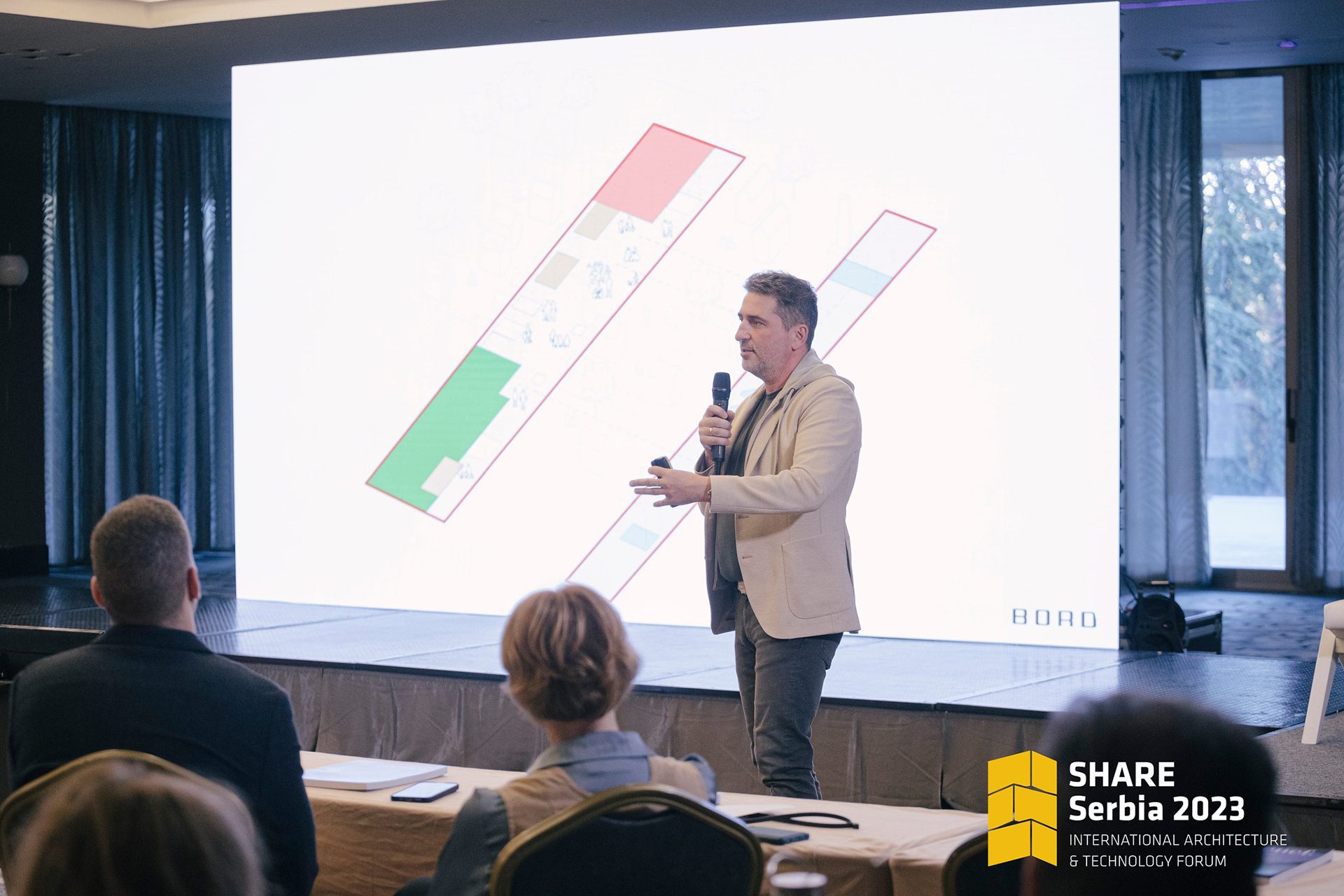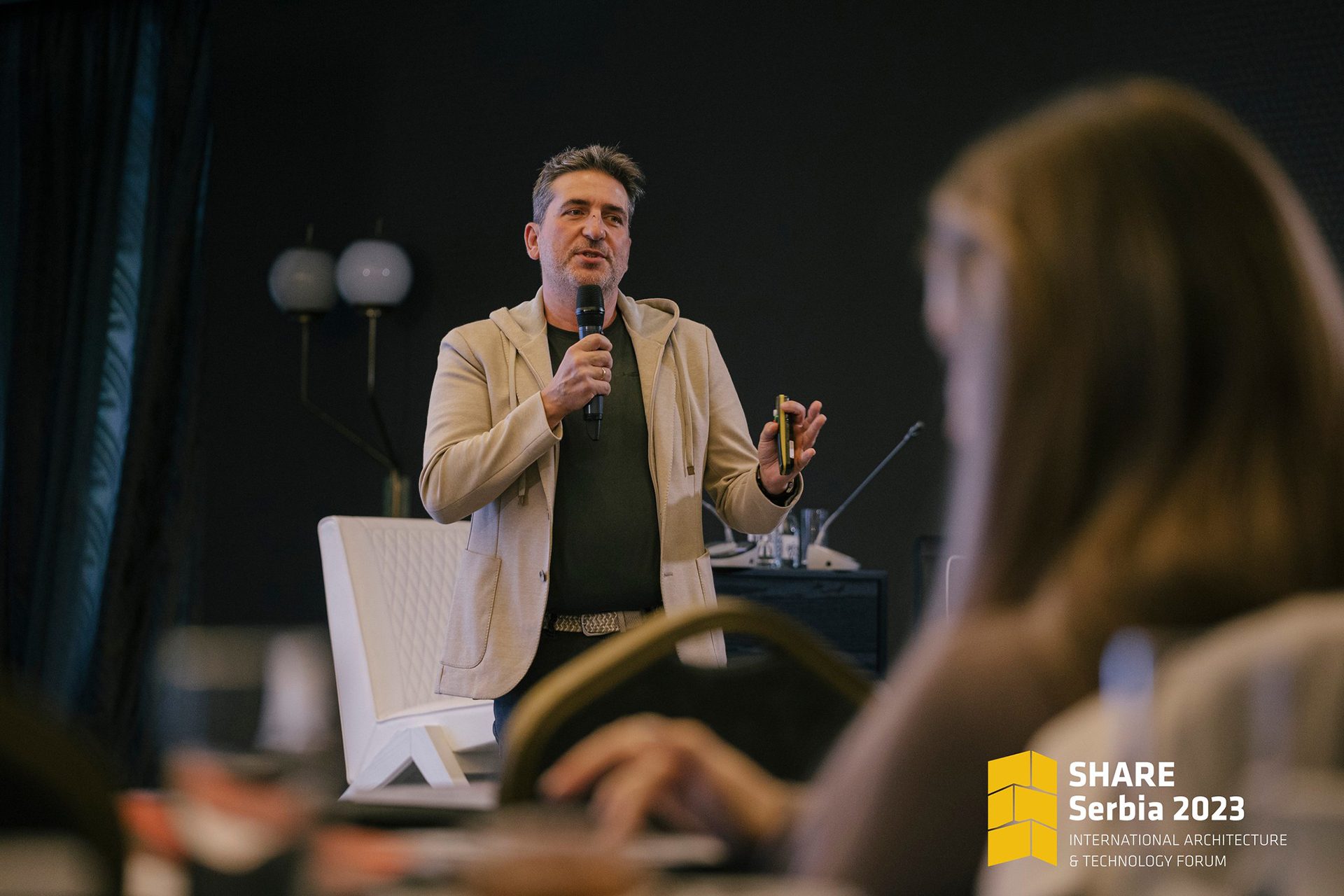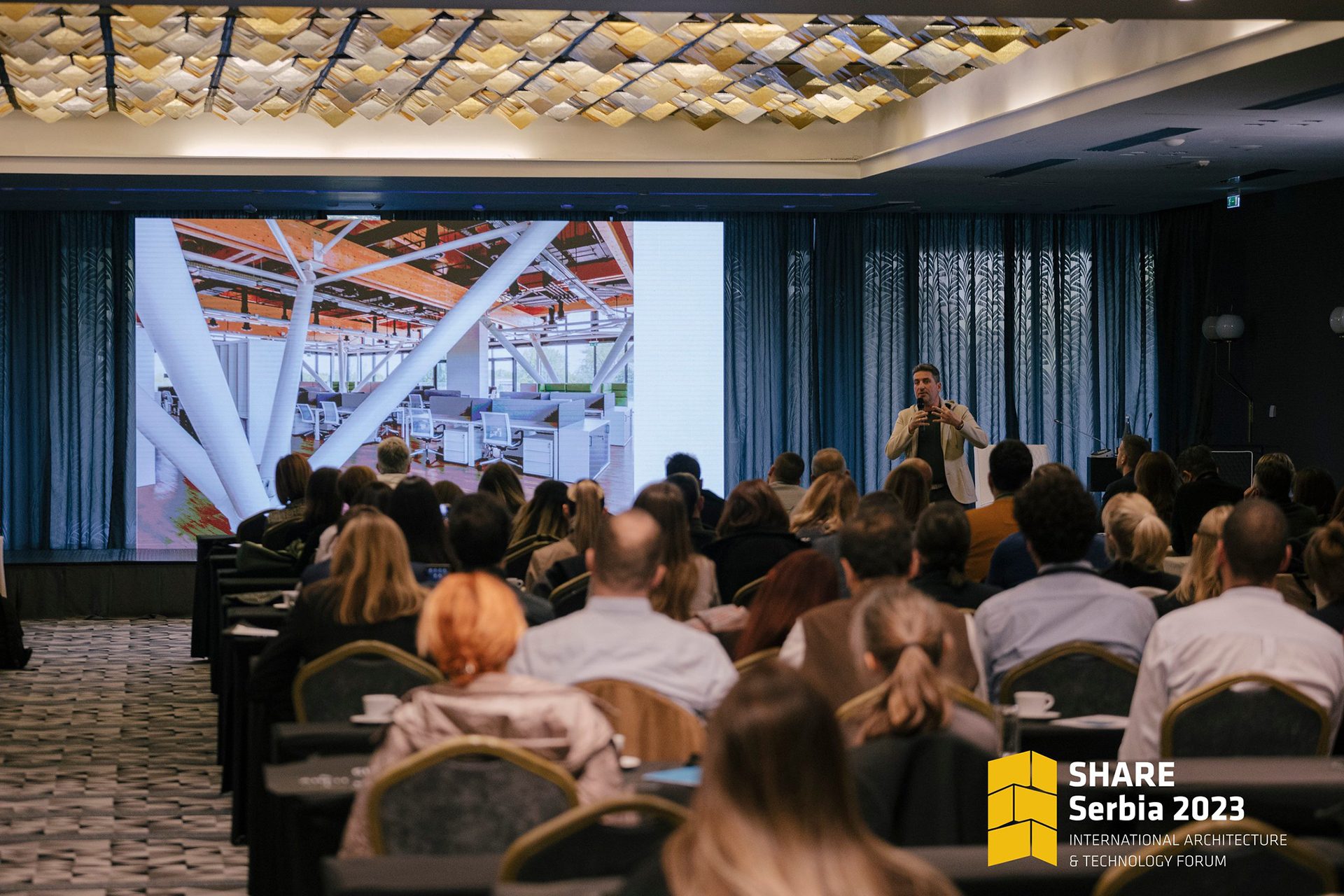„On forgetting facades and creating public spaces” - was the title of the presentation delivered by Péter Bordás, our studio’s head architect at SHARE Serbia 2023.
In our studio concept plays a major part when planning as this is what defines the mass, appearance and the facade of a building. This is the reason why we usually say: ‘we do not design facades’. We believe that we can give such answers to the problems occuring during the design process that will strongly determine the building’s character. This philosophy is particularly essential in the case of public buildings as they have an important role in the urban landscape. Their size and significance require them to blend in with the city’s texture and to be approachable, accessible, permeable and attractive.
In his presentation Péter introduced the audience to three projects designed for larger communities, where the facade is not a thick wall which separates the outside world from the inside but rather a delicate membrane that blurs the boundaries between internal and external spaces.
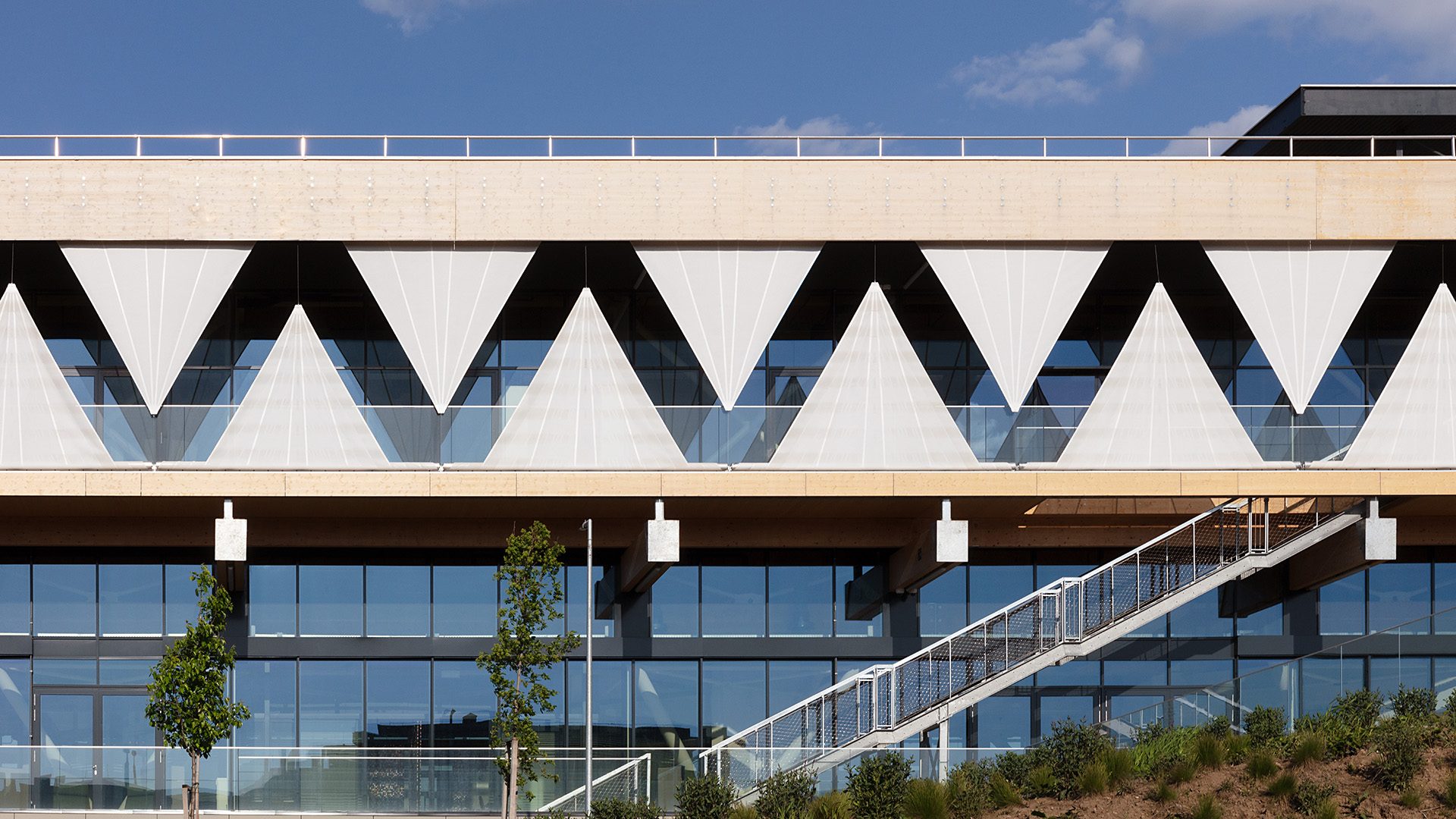
The Innovation Centre of Debrecen is an incubator house connected to the research and development of the university. Due to its function the building had to be an open, attractive and inspiring place. The concept of the three-floor building resembles a shelf where the top level is dedicated to research, the lowest one to production and the middle one on the entrance level houses community areas for thought exchange and inspiration. The building features a pillar frame structure surrounded by glass walls and terraces. On the outer edge of the terraces there are adjustable shading canvases which define the external appearance. The multi layered facade is accessible and connects to all floors making the entire building an attractive space, resembling a miniature city centre.
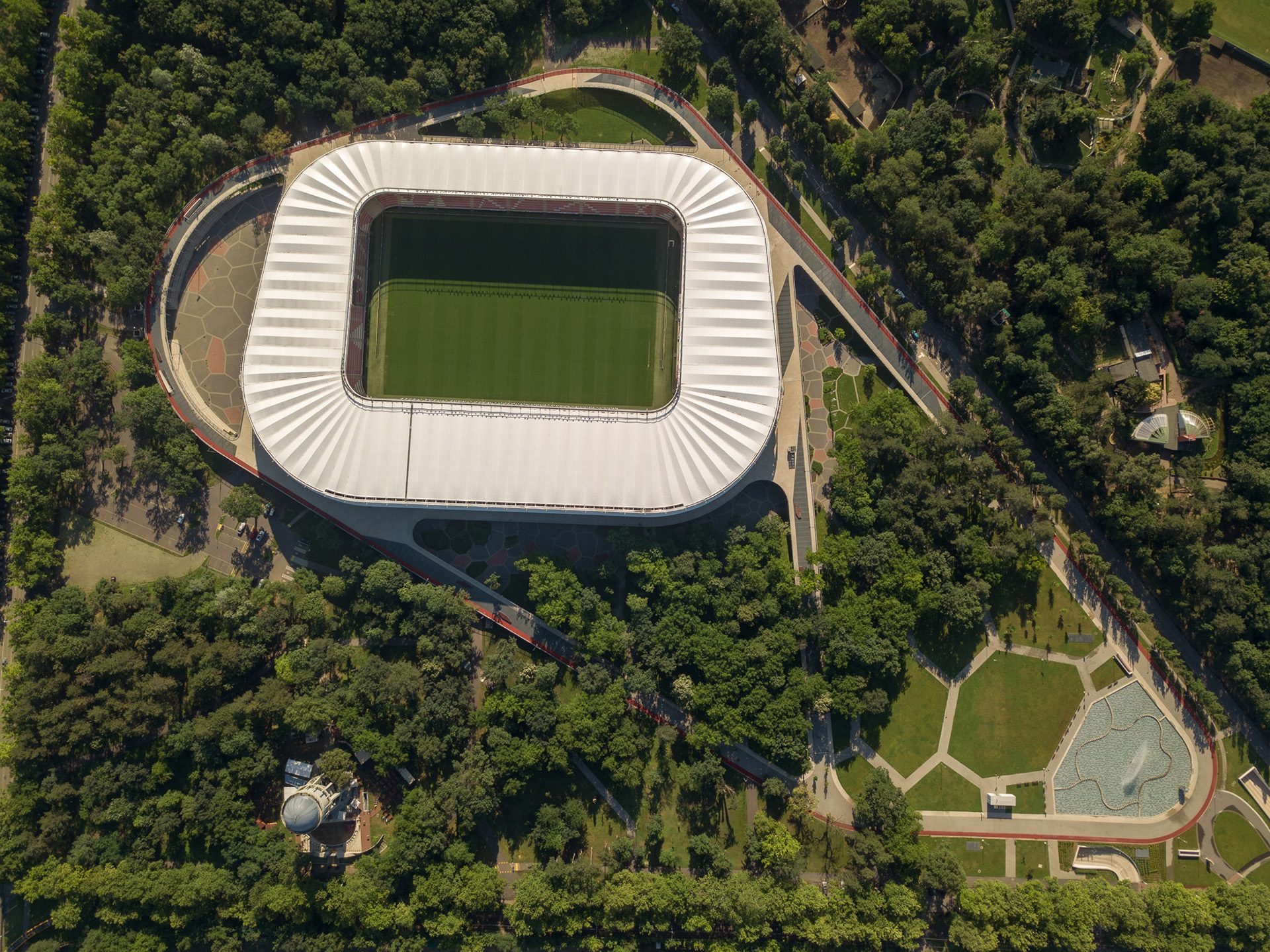
Nagyerdei Stadium is built in a forest called Nagyerdő, which is a very popular recreational park in Debrecen. The tasks of the building were to revitalise the neglected park and act as a catalyst for the urban development. The question was how to place a stadium into a protected city park?
We placed communal spaces to the entire lower level of the multifunctional complex, which are connected to the park. The 20000-seat stadium function is designed above this, ‘floating’ on the level of the tree crowns. The approach to the grandstands is from an elevated walkpath that encircles the stadium creating a transitional zone around the building that devides nature from the built environment. The appearance of the stadium building is determined by its light, white balloon-like shape. The elevated walkway placed in the park and the community functions built on the park level are essential elements of the building as these connect it into the city’s life.
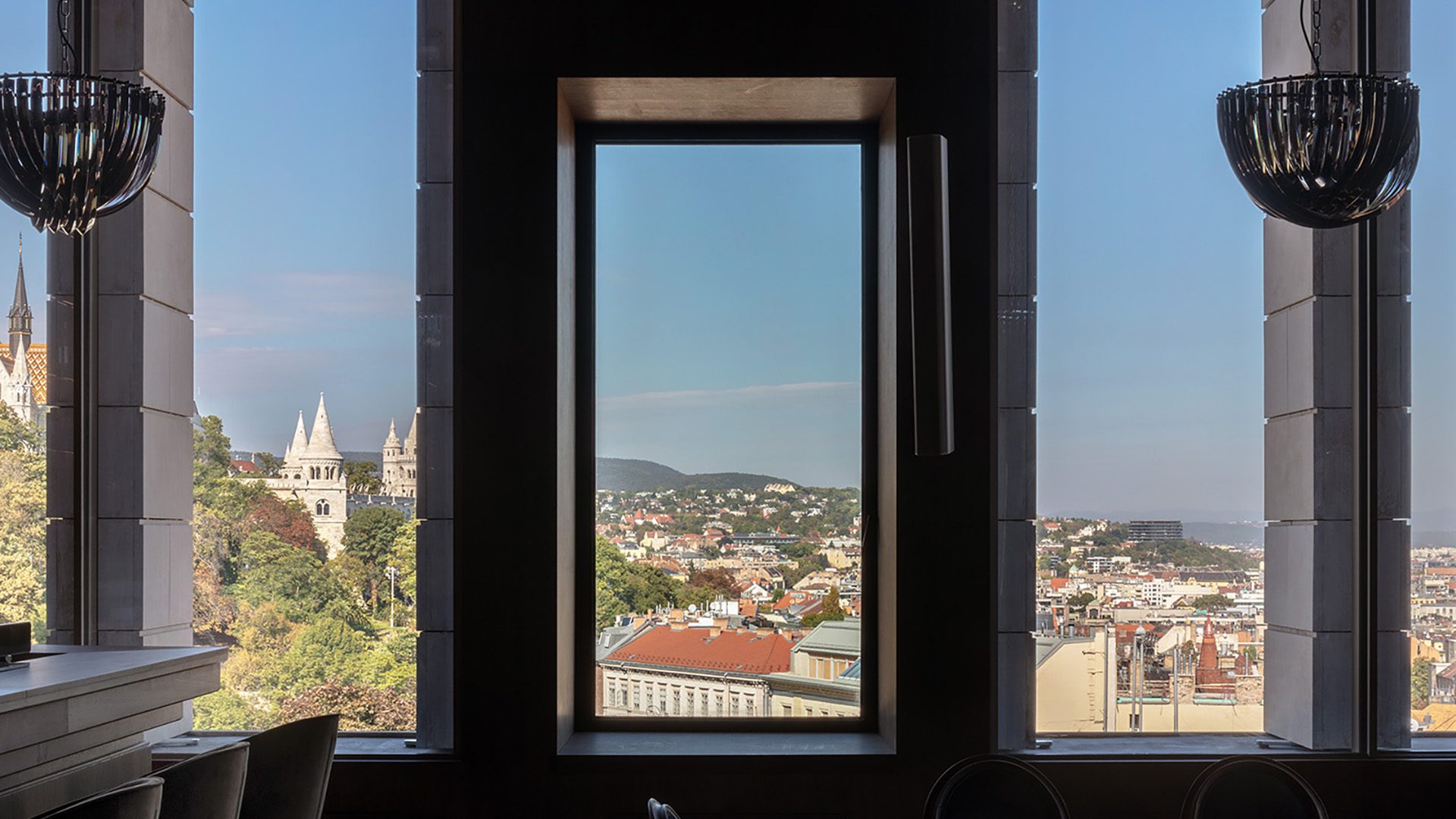
Villa Lónyay-Hatvany is a reconstruction of a villa designed by Miklós Ybl in the Buda Castle. The task was to restructure an old neoclassical building which we intended to carry out with modern equipments. The question was how to do this? The speciality of Lónyay-Hatvany Villa is that its neoclassical stone facade opens up on a push of a button towards the panorama. Our concept was a building that can change its ‘costume’ – can be opened and closed like a garment. It was not necessary to design a facade here either as it was already done by Miklós Ybl.
